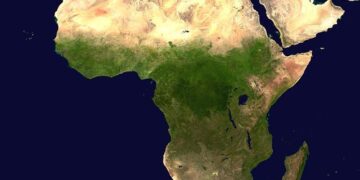As the sun rises over the sprawling fields of Brazil, the landscape transforms into a vibrant patchwork of green and gold, signaling the arrival of a new season for the country’s soybean crop. This agricultural powerhouse, renowned as the world’s largest exporter of soybeans, holds the reins to global commodity markets, where even a slight shift in yield can echo through economies far and wide. In a world increasingly reliant on this versatile crop for food, fuel, and livestock feed, the implications of Brazil’s agricultural performance extend far beyond its borders. In this article, we delve into the intricate web of factors influencing Brazil’s soybean production and explore how the outcomes of this crucial harvest will shape world prices, impacting farmers, consumers, and markets around the globe. Join us as we unpack the dynamics at play in Brazil’s soybean sector and their potential ripple effects on the international stage.
Impact of Brazils Soybean Yields on Global Markets
Brazil’s soybean yields play a pivotal role in shaping global commodity markets. As one of the largest producers of soybeans, Brazil’s agricultural success directly impacts supply chains and pricing dynamics worldwide. A fruitful harvest can lead to a surplus, resulting in lower prices, whereas adverse weather conditions or pest infestations could tighten supply, causing a spike in costs. The fluctuations in Brazil’s crop yield create a ripple effect that impacts importing countries, such as China and the European Union, which rely heavily on Brazilian soybeans for animal feed and cooking oil.
The interdependence of Brazil’s soybean production and international trade is highlighted by the following factors:
- Export Volume: A good harvest increases Brazil’s export capacity, influencing global supply.
- Competitive Pricing: Lower domestic prices can lead to more aggressive export strategies, further affecting international benchmarks.
- Market Sentiment: Traders react to news of harvest forecasts and yield reports, which can lead to fluctuations in futures markets.
Ultimately, understanding Brazil’s soybean yields allows stakeholders to better navigate the complexities of global markets. Here is a snapshot of how various regions might adjust to changes in Brazilian soybean production:
| Region | Potential Impact of Brazilian Yields |
|---|---|
| China | Higher imports if prices drop; adjust feed strategies. |
| United States | Increased competition; price adjustments for domestic producers. |
| Europe | Possible shifts toward alternative sources if prices rise. |

Navigating Price Fluctuations in the Soybean Sector
In the ever-volatile landscape of the soybean market, price fluctuations are not just a matter of simple supply and demand. Factors that contribute to these variances are multifaceted and include:
- Weather Conditions: Droughts, floods, and unexpected frosts can drastically impact yield.
- Global Demand: As key markets such as China and Europe increase their consumption, demand pressures can elevate prices.
- Trade Policies: Shifts in U.S. and international trade agreements can create ripples across the sector.
With Brazil being a major player in the global soybean game, its production levels directly influence market dynamics. An ongoing increase in Brazil’s crop yields can lead to a temporary saturation, causing downward pressure on prices. Conversely, a disappointing harvest can stir panic among traders and lead to soaring prices as countries scramble to secure their soybean needs. When analyzing Brazil’s role, it’s essential to consider:
| Factor | Impact on Prices |
|---|---|
| Record Production | May lead to lower global prices |
| Pest Infestations | Can cause sharp price spikes |
| Export Demand | Increased demand can drive prices higher |
As farmers and investors navigate through these fluctuations, a proactive approach towards market analysis becomes imperative. Monitoring global trends, investing in robust forecasting tools, and understanding local agricultural shifts will enable stakeholders to make informed decisions. In this environment, staying educated about Brazil’s planting and harvesting schedules is crucial, as they will continue to dictate both regional and international price mechanisms in the soybean sector.

Strategies for Farmers to Adapt to Changing Prices
With the fluctuating landscape of global soybean prices largely influenced by Brazil’s crop yield, farmers must employ innovative tactics to navigate these economic shifts effectively. One effective strategy is to implement diversification in crop production. By not solely relying on soybeans, farmers can mitigate risks associated with price volatility. This might involve cultivating a range of crops, such as corn or pulses, that can sustain revenue during periods of low soybean prices.
Another approach is adopting advanced technology and precision farming techniques, which can enhance efficiency and reduce costs. By leveraging data analytics, satellite imagery, and IoT sensors, farmers can optimize inputs — like fertilizers and water — thus maximizing their yields despite economic pressures. Investing in mobile apps for real-time market price updates also equips farmers with insights into the best times to sell their products, ensuring they capitalize on favorable pricing.
| Technology | Benefit |
|---|---|
| Data Analytics | Optimize resource allocation |
| Drone Monitoring | Track crop health effectively |
| Smart Irrigation Systems | Reduce water usage & costs |
farmers should consider forming cooperatives or partnerships with other growers to strengthen their market position. By pooling resources and sharing knowledge, farmers can negotiate better prices for inputs and create collective marketing strategies to sell their soybeans. Such collaborations can not only stabilize income but also enhance their bargaining power against large agricultural commodities markets.

Future Trends in Soybean Production and Market Dynamics
As the global agricultural landscape continues to evolve, Brazil’s soybean crop plays a pivotal role in shaping the dynamics of international markets. With advances in agronomic practices, Brazilian farmers are increasingly leveraging technology to boost their yields. Techniques such as precision agriculture, genetically modified seeds, and enhanced irrigation systems are becoming commonplace, allowing producers to cultivate soybeans more efficiently. This improved productivity not only meets domestic demands but also positions Brazil as a key player in the global soybean supply chain.
Furthermore, market dynamics are influenced by shifting consumer preferences and international trade agreements. The growing demand for plant-based proteins, along with biofuel production, drives soybean consumption worldwide. Brazil’s ability to adapt to these trends is critical. Competing against major exporters like the U.S. and Argentina, Brazilian farmers must remain nimble in responding to both market demands and regulatory environments. Future trade agreements could also reshape competitive landscapes, highlighting the importance of Brazil’s political and economic stability in sustaining its role in the soybean market.
Looking ahead, environmental sustainability and climate change are expected to significantly impact soybean production practices. Farmers may increasingly adopt crop rotation and cover cropping to preserve soil health and reduce environmental footprints. Moreover, innovations in sustainable practices could enhance the marketability of Brazilian soybeans, appealing to environmentally conscious consumers and investors. As market pressures mount, stakeholders in the soybean industry must work collaboratively to balance production efficiency with ethical considerations, ensuring that Brazil’s leadership in soybean exports remains resilient in an ever-changing global economy.
Insights and Conclusions
As the sun sets over Brazil’s lush soybean fields, the ripple effects of its harvest extend far beyond local borders. The intricate dance of supply and demand is poised to be influenced by this significant crop, shaping global markets and impacting farmers and consumers alike. With the country’s pivotal role in soybean production, shifts in Brazil’s agricultural landscape will undoubtedly reverberate through economies worldwide. As stakeholders step into the unpredictable realm of international pricing, one thing remains certain: Brazil’s soybean crop will continue to wield a powerful influence in the global agricultural arena. As we look to the future, monitoring these developments will be essential for anyone involved in the world of agriculture and trade. Only time will tell how these seeds of change will grow in the ever-evolving narrative of global food systems.































